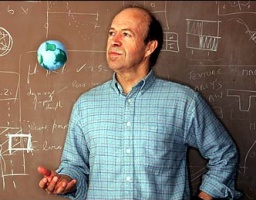Below is a repost of an op-ed by Dr. James Hansen, director NASA’s Goddard Institute for Space Studies, that ran in the Washington Post last Friday, August 3.
 When I testified before the Senate in the hot summer of 1988 , I warned of the kind of future that climate change would bring to us and our planet. I painted a grim picture of the consequences of steadily increasing temperatures, driven by mankind’s use of fossil fuels.
When I testified before the Senate in the hot summer of 1988 , I warned of the kind of future that climate change would bring to us and our planet. I painted a grim picture of the consequences of steadily increasing temperatures, driven by mankind’s use of fossil fuels.
But I have a confession to make: I was too optimistic.
But as the climate warms, natural variability is altered, too. In a normal climate without global warming, two sides of the die would represent cooler-than-normal weather, two sides would be normal weather, and two sides would be warmer-than-normal weather. Rolling the die again and again, or season after season, you would get an equal variation of weather over time.
But loading the die with a warming climate changes the odds. You end up with only one side cooler than normal, one side average, and four sides warmer than normal. Even with climate change, you will occasionally see cooler-than-normal summers or a typically cold winter. Don’t let that fool you.
Our new peer-reviewed study, published by the National Academy of Sciences, makes clear that while average global temperature has been steadily rising due to a warming climate (up about 1.5 degrees Fahrenheit in the past century), the extremes are actually becoming much more frequent and more intense worldwide.
When we plotted the world’s changing temperatures on a bell curve, the extremes of unusually cool and, even more, the extremes of unusually hot are being altered so they are becoming both more common and more severe.
The change is so dramatic that one face of the die must now represent extreme weather to illustrate the greater frequency of extremely hot weather events.
Such events used to be exceedingly rare. Extremely hot temperatures covered about 0.1 percent to 0.2 percent of the globe in the base period of our study, from 1951 to 1980. In the last three decades, while the average temperature has slowly risen, the extremes have soared and now cover about 10?percent of the globe.
This is the world we have changed, and now we have to live in it — the world that caused the 2003 heat wave in Europe that killed more than 50,000 people and the 2011 drought in Texas that caused more than $5 billion in damage. Such events, our data show, will become even more frequent and more severe.
There is still time to act and avoid a worsening climate, but we are wasting precious time. We can solve the challenge of climate change with a gradually rising fee on carbon collected from fossil-fuel companies, with 100?percent of the money rebated to all legal residents on a per capita basis. This would stimulate innovations and create a robust clean-energy economy with millions of new jobs. It is a simple, honest and effective solution.
The future is now. And it is hot.
Leave a Reply